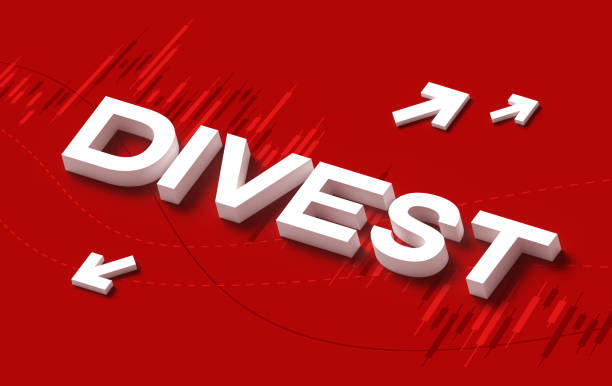The Bottom Line: Critics of ESG investing exhibit a lack of knowledge and awareness of key features of sustainable investing specifically related to ESG integration.
Introduction
Increasingly, criticism of ESG investing has taken on a political tilt. These arguments often identify ESG funds as a means of ‘state control of the economy and of society’. This has led investment fund industry leader, BlackRock’s Larry Fink, to stop using the ESG moniker as he believes that it has been politically “weaponized” and “misused by the far left and the far right.”
I agree with this, and that both ends of the political spectrum have contributed to a level of confusion and misunderstanding regarding ESG investing and fund products. At the same time, it has “rallied” anti-ESG investors on the one hand, while heightening the risk of alienating sustainable investors on the other. Possibly as concerning is that some of the arguments used to “weaponize” this investment strategy exhibit a lack of knowledge and awareness of what the ESG investment process involves.
In the following sections, I identify 5 key features of sustainable investing specifically related to ESG integration approaches, which political critics often overlook when making anti-ESG claims. Each is important because they are instrumental toward meeting shareholder’s sustainable investment objectives. They also provide insights central to more precisely define a sustainable fund’s political stance, if any. These include:
Confusing ESG Investing with Socially Responsible Approaches
A large part of the bewilderment associated with ESG investing can be tied to some mistakenly defining it as the same thing as socially responsible investing. ESG investing should not be confused with socially responsible investing. In the case of the latter, the investment approach is based upon recognizing a set of beliefs viewed toward achieving selected positive societal outcomes. Such beliefs may encompass social, moral, ethical or religious principles, and are typically expressed and implemented via negative screening or similar ‘divestiture” methods. On the other hand, ESG investing or “integration strategies” specifically analyze the performance and risks of ESG considerations when making buy, hold, and sell decisions associated with individual securities. These investment distinction may be further confused when one realizes that significant variations exist in how ESG integration is deployed for different portfolios. Further, there may areas of broader overlap in these approaches. For example, ESG integration investment strategies may also employ negative screening of selected sectors or even companies that generate revenues considered to be from sources with negative ESG characteristics.
Not Recognizing the Impacts of ESG Factors on Financial Risks and Returns
It is important to emphasize that the portfolio management process and those charged with conducting it, have a fiduciary duty to act on behalf of all their shareholder’s financial interests. This does not mean that financial investment returns and risk objectives exclude ESG issues from consideration. As a practical matter, the opposite is true. ESG factors and their risks-return opportunities are increasingly recognized as being critical contributors to investment risks and returns. For example, a company that has a production process that is heavily reliant upon high carbon-based fossil fuels is exposed to risks that those with non-carbon based alternatives are not. This may affect their future value as an investment. Even non-pecuniary ESG factors may have value and risks implications from a fiduciary standpoint when evaluating investments. Take the case of properties with scenic vistas such as ocean views. These shore-line sites typically are valued higher than those inland because of their views and access to their vistas. They also often have greater risks due to their exposure to potential flooding. There are many such ESG-related issues that may affect shareholders’ financial interests, whether a fund has an ESG mandate or not.
Under Estimating the Complexity & Specialized Nature of ESG Investment Processes
A fund’s ESG integration approach, policies and restrictions introduce added layers of analytical complexity to its investment management process. These analytics are needed to select investments and construct portfolios that account for relevant and material ESG risks and opportunities, and evaluate specific factors that are distinctive from corporate business concerns. For instance, environmental and social justice issues have increasingly been identified as relevant when considering ESG factors in investment decision-making. To evaluate these factors, a fund’s portfolio manager may be called upon to identify and measure a company’s ESG “culture”, business practices, community outreach programs and track-record. This sometimes requires both quantitative and qualitative judgements which may vary from cases-to-case and dynamically over time. At the same time, such analytical criteria may provide insights into how specific fund managers prioritize various ESG factors.
Mis-interpreting the Role of ESG Engagement & Collaboration
A fair amount of the political criticism of ESG integration in fund investing centers on managers’ engagement activities with companies (and issuers) of securities being considered as investments. It has been suggested that such engagement activities are “collusive” and a means to force companies into taking business actions, and by extension, political stances that distort the market. A fund’s position as a large shareholders of a company’s securities clearly carry weight toward defining its ESG business positions. However, this influence must be examined with respect to a fund manager’s established engagement and proxy voting guidelines, practices, and especially, its related track-record. Engagement processes are anything but one-side, and are subject to individual funds’ financial investment requirements and when applicable, their investors’ sustainability objectives.
Lack of Sensitivity to ESG Investment Disclosure and Transparency Practices
The level of a fund’s transparency and disclosure regarding its investment approach, restrictions and policies takes on added importance with portfolios employing ESG integration strategies. It raises the fundamental question of how can a fund using this or any approach be compared and judged political or otherwise, if its investment methods and guidelines are not taken into account? The absence of ESG integration practices and criteria for funds using different investment and engagement processes, make judgements as to their political positions nothing more than guesswork.
The investment factors for funds integrating ESG considerations identified above are admittedly, highly technical. They require a level of expertise that may not be readily available to those outside the asset management business. This raises significant challenges when attempting to define these fund’s political positions and intentions, if any. Further, to account for these factors and attempt to define an industry-wide political profile, is a task requiring extraordinary analytical expertise, data and resources.
It’s clear that some of those attempting to label the political stance of funds integrating ESG factors, are not considering all of the dimensions of this very involved task. Most concerning is that these “observers” seem to be short-changing the fund’s investment management and fiduciary roles that are designed to control for the very concerns that they are raising. In the future, hopefully these critics of ESG funds will be more sensitive to the factors described in this paper as well as, the highly diverse character of the mutual fund industry, in general.
By Steve Schoepke, Director of Portfolio Research
Sustainable Research & Analysis, LLC





